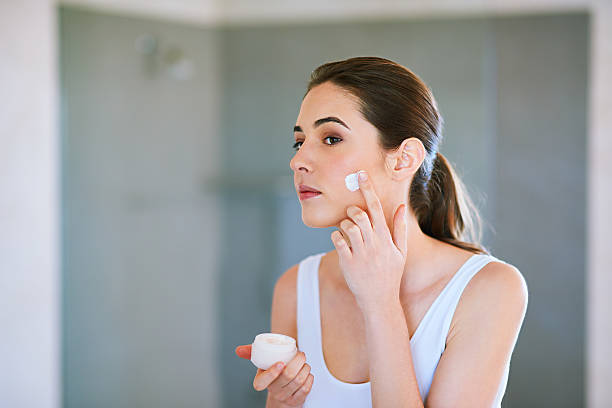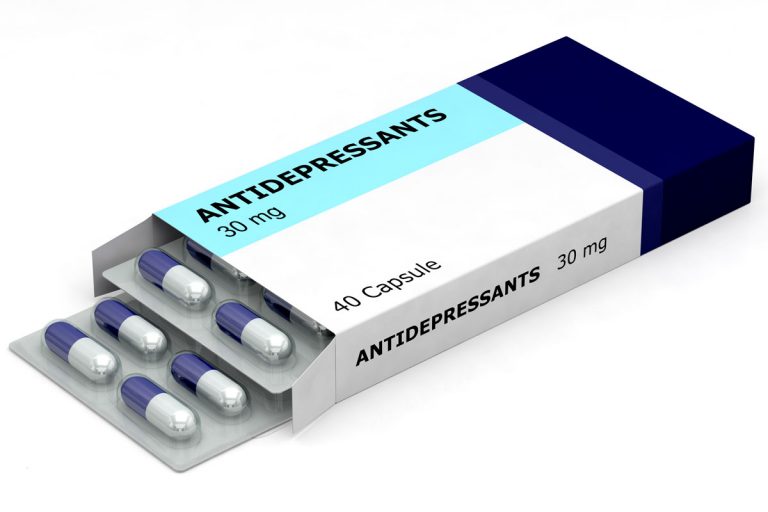Skin is more than a biological barrier—it’s a living, breathing reflection of your internal health, environment, and emotional state. Every square inch of your body’s largest organ is alive with blood vessels, nerve endings, and a complex microbiome of microorganisms. Whether it flushes with warmth after a run or tightens in the cold air, your skin is constantly speaking to you.
Creating a healthy skincare routine isn’t about following a trendy checklist or chasing perfection. It’s about entering a long-term relationship with your skin: listening to it, respecting its unique needs, and adjusting your care as it evolves. Skincare, at its best, is a ritual of self-respect and maintenance that goes far beyond vanity. It’s a form of preventative health.
Know Thy Skin: The Cornerstone of Your Routine
Before applying any product, before researching a single serum, you must get acquainted with your skin type. This foundational knowledge influences everything: how often you cleanse, what kind of moisturizer you need, whether exfoliation will be your best friend or worst enemy.
Skin types aren’t rigid boxes but rather starting points. Most people fall into broad categories—normal, oily, dry, combination, or sensitive. But even these are fluid, influenced by hormones, seasons, diet, stress, and aging.
Oily skin may shine before noon and struggle with clogged pores. Dry skin, in contrast, often feels tight or rough, especially in cooler weather. Combination skin might feel like a patchwork: an oily forehead, dry cheeks, maybe even sensitive spots that sting under certain ingredients. Sensitive skin, meanwhile, tends to overreact—blushing at temperature changes, itching after fragrance, or flaring up with stress.
Tuning in to your skin’s behavior over time will yield better results than blindly following someone else’s routine. Your skin might be dry today and oily tomorrow. What matters most is responsiveness—learning to adapt your routine as conditions change.
The Morning Ritual: Protect and Prepare
Waking up to a fresh face isn’t just about washing away sleep. Your morning skincare routine sets the tone for your entire day. It primes your skin to face the elements—sun, wind, pollution—and helps preserve the gains made during the night, when your skin naturally regenerates.
Begin with a gentle cleanse—not to strip the skin, but to remove overnight oils, sweat, and lingering products. Water alone may suffice for some, especially those with dry or sensitive skin, but others may benefit from a creamy or foaming cleanser, depending on their needs.
Once clean, the next step is hydration. A lightweight toner or essence can replenish lost moisture and prepare the skin for what comes next. Hydrating ingredients like glycerin, hyaluronic acid, and panthenol act like magnets, pulling water into your cells.
Serums enter the stage next—these concentrated formulas are the power players of your routine. Morning serums often include antioxidants like Vitamin C, which brighten the complexion and shield against environmental stressors. Think of Vitamin C as your skin’s bodyguard—fending off free radicals before they can inflict damage.
Locking it all in is your moisturizer, chosen for your skin type and the climate. A gel may suit humid environments and oilier skin, while a thicker cream helps dry skin resist transepidermal water loss.
And finally, the most non-negotiable step of all: sunscreen. It’s not a suggestion or a seasonal accessory—it’s your skin’s daily armor. A broad-spectrum SPF of at least 30 protects against both UVA (aging) and UVB (burning) rays, reducing your risk of skin cancer and preventing premature aging. Think of sunscreen as the insurance policy for all your hard work.
The Evening Ritual: Cleanse, Repair, Rebuild
Nighttime is when your body heals. Your skin cells double their repair efforts, making the hours before bed prime time for recovery. An evening routine should be gentle but potent—focused on undoing daily damage and supporting regeneration.
Begin with a thorough cleanse, especially if you wear makeup or SPF. Double cleansing—a practice where an oil-based cleanser breaks down sunscreen and debris, followed by a water-based cleanser to rinse everything away—is highly effective. It’s not about excess, but effectiveness.
With a clean slate, your skin is ready to absorb reparative ingredients. This is where actives like retinoids (vitamin A derivatives) and exfoliating acids come in. Used wisely, they can encourage cell turnover, fade hyperpigmentation, clear acne, and even out texture. But they require respect—too much too quickly can lead to irritation. Start slow, observe your skin’s response, and build tolerance over time.
Night creams and oils, richer than their daytime counterparts, help seal in moisture and repair the skin barrier. Ceramides, peptides, and niacinamide are excellent nighttime allies, helping to reinforce your skin’s resilience while you sleep.
Don’t forget your eyes and lips. These areas are thinner and more delicate, and benefit from specific products designed for their unique needs. Hydration and gentle care go a long way toward preventing fine lines and discomfort.
The Science of Exfoliation: When and How to Shed the Dead
Exfoliation, when done right, is transformative. It removes the outer layer of dead cells, revealing fresher skin beneath and allowing other products to penetrate more effectively. But exfoliation isn’t a one-size-fits-all solution—it’s a tool that must be wielded with care.
There are two primary types: physical exfoliants, which use particles or tools to manually remove dead skin; and chemical exfoliants, which use acids or enzymes to dissolve the bonds between skin cells. The latter—when formulated well—are often gentler and more consistent.
Alpha hydroxy acids (AHAs) like glycolic and lactic acid work on the surface, brightening dull skin and smoothing rough patches. Beta hydroxy acids (BHAs) like salicylic acid penetrate into pores, making them ideal for oily or acne-prone skin. Enzymes, derived from fruit extracts, offer a softer touch for sensitive types.
Frequency depends on your skin. Some can handle exfoliation multiple times a week, while others may need only occasional use. Over-exfoliation is one of the most common skincare mistakes—it weakens the barrier, leads to inflammation, and can trigger breakouts or dryness.
When in doubt, less is more. Treat exfoliation as a powerful intervention, not a daily habit. Watch your skin for cues—it will tell you when it’s had enough.
Hydration vs. Moisture: The Unsung Difference
Though often used interchangeably, hydration and moisture address different needs. Hydration refers to water content in the skin, while moisture refers to oil. A well-balanced routine should address both.
Dehydrated skin lacks water and can occur in any skin type—including oily. It may feel tight, appear dull, or show fine lines more prominently. Humectants like hyaluronic acid and glycerin attract water into the skin, helping to resolve dehydration.
Moisturizers, on the other hand, seal in hydration and restore lipids that reinforce the skin barrier. They often include emollients like squalane or shea butter, and occlusives like dimethicone or petrolatum.
Layering hydration and moisture—hydrating first, moisturizing after—is key. This two-step approach keeps water where it belongs and strengthens your skin’s natural defenses.
Listening to Your Skin: The Art of Adaptation
A skincare routine is not a fixed formula—it’s a conversation. Your skin is dynamic, shifting with seasons, stress levels, hormones, and age. A routine that worked wonders last winter may backfire in the summer. Your once oily skin may become drier with age or medications. Acne-prone skin may calm after dietary changes or flare up with new supplements.
Be ready to adapt. Swap a light gel for a richer cream in winter. Introduce calming ingredients like centella asiatica or allantoin during periods of stress or irritation. Scale back actives when your barrier feels compromised. The most effective routines are those that evolve.
Track patterns, experiment thoughtfully, and give products time to work. Your skin has a 28-day turnover cycle—expect results in weeks, not days.
The Gut-Skin Connection: Beauty From the Inside Out
You cannot address skin health without considering internal wellness. The state of your gut, hormones, sleep, and diet all play critical roles in the condition of your skin.
Chronic inflammation, often rooted in poor diet or stress, can manifest as breakouts, redness, or premature aging. A diet rich in antioxidants, healthy fats, and diverse fibers supports skin integrity from the inside. Probiotics and fermented foods nourish your microbiome—inside and out.
Hydration, too, is crucial. Drinking adequate water may not “moisturize” the skin directly, but it supports circulation and nutrient delivery, which affect skin tone and elasticity.
Skincare is not just topical—it’s holistic. A glowing complexion is a reflection of internal balance.
Aging Gracefully: Building a Routine for Every Decade
Skincare is not about fighting aging, but about supporting your skin through every stage of life. In your twenties, the focus may be on prevention and establishing habits. In your thirties and forties, the skin begins to slow collagen production and cell turnover—support it with peptides, antioxidants, and gentle exfoliation.
Beyond fifty, the skin becomes thinner and drier. Barrier support becomes even more vital, and ingredients like ceramides, cholesterol, and fatty acids help maintain elasticity and comfort. Retinoids, if tolerated, remain one of the most evidence-backed tools for reducing fine lines and improving texture.
The goal isn’t to freeze time but to age with resilience and confidence.
Skincare as Self-Care: The Emotional Side of the Routine
There’s a reason why the phrase “skincare routine” often accompanies conversations about mental health. For many, it’s the only moment in a busy day where they are alone, undistracted, and touching their own face with intention.
The act of cleansing, of massaging in a serum, of applying a mask—these become rituals of presence. They slow you down, encourage mindfulness, and foster a sense of control and care in a chaotic world. Skincare isn’t superficial—it’s spiritual.
When done with gentleness and love, skincare can become a grounding force. It’s about showing up for yourself, every day, no matter how busy or exhausted you feel.
Avoiding the Noise: How to Choose Products Wisely
In an era of TikTok influencers and endless product drops, the skincare world can feel like a noisy marketplace. Every bottle promises miracle results. But a healthy skincare routine is not about using more—it’s about using better.
Fewer products, used consistently and with intention, often yield better results than a dozen trending items. Learn to read ingredient lists. Look for formulations backed by science. Ignore the marketing and observe how your skin actually responds.
And always, patch test new products. Even “clean” or “natural” ingredients can trigger reactions. Your skin’s safety is worth a little extra patience.
Professional Help: Knowing When to Consult Experts
Even the most informed DIY skincare enthusiast can benefit from professional insight. Dermatologists and licensed estheticians bring valuable experience and access to treatments that go beyond what can be done at home.
If you’re dealing with persistent issues like cystic acne, rosacea, melasma, or severe sensitivity, don’t hesitate to seek guidance. Professional treatments—like chemical peels, lasers, microneedling, or prescription topicals—can dramatically accelerate results when used appropriately.
You don’t need to wait for a crisis to see a professional. Annual checkups for skin cancer screening and routine consultations for product optimization can keep your skin in top form for the long run.
Conclusion: Skin as a Mirror of Inner Balance
Ultimately, a healthy skincare routine is a dialogue—a commitment to ongoing care rather than a sprint toward perfection. It’s the embodiment of your relationship with your body, your health, and your sense of self-worth.
Every cleanser, every serum, every moment you look in the mirror is an opportunity—not just for improvement, but for connection. With patience, mindfulness, and consistency, skincare becomes more than just a routine. It becomes a reflection of the way you live: aware, compassionate, and beautifully human.






